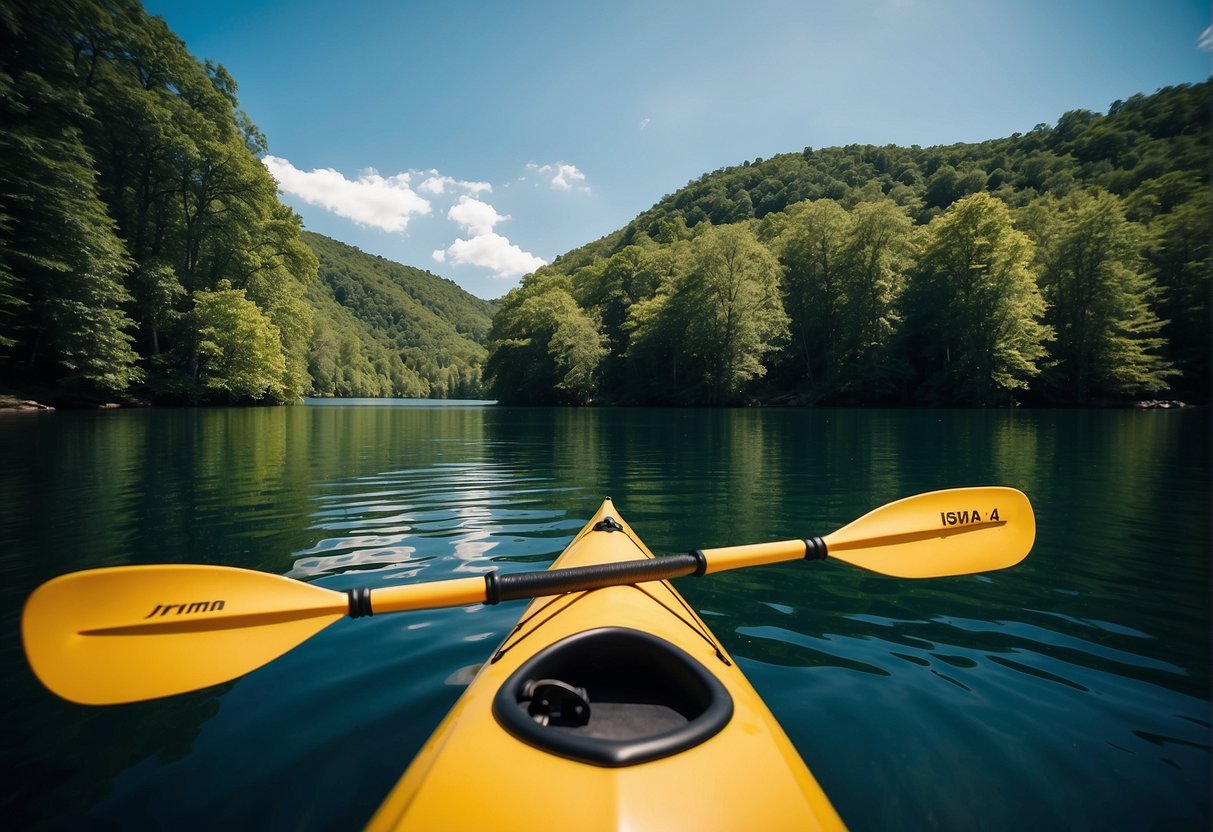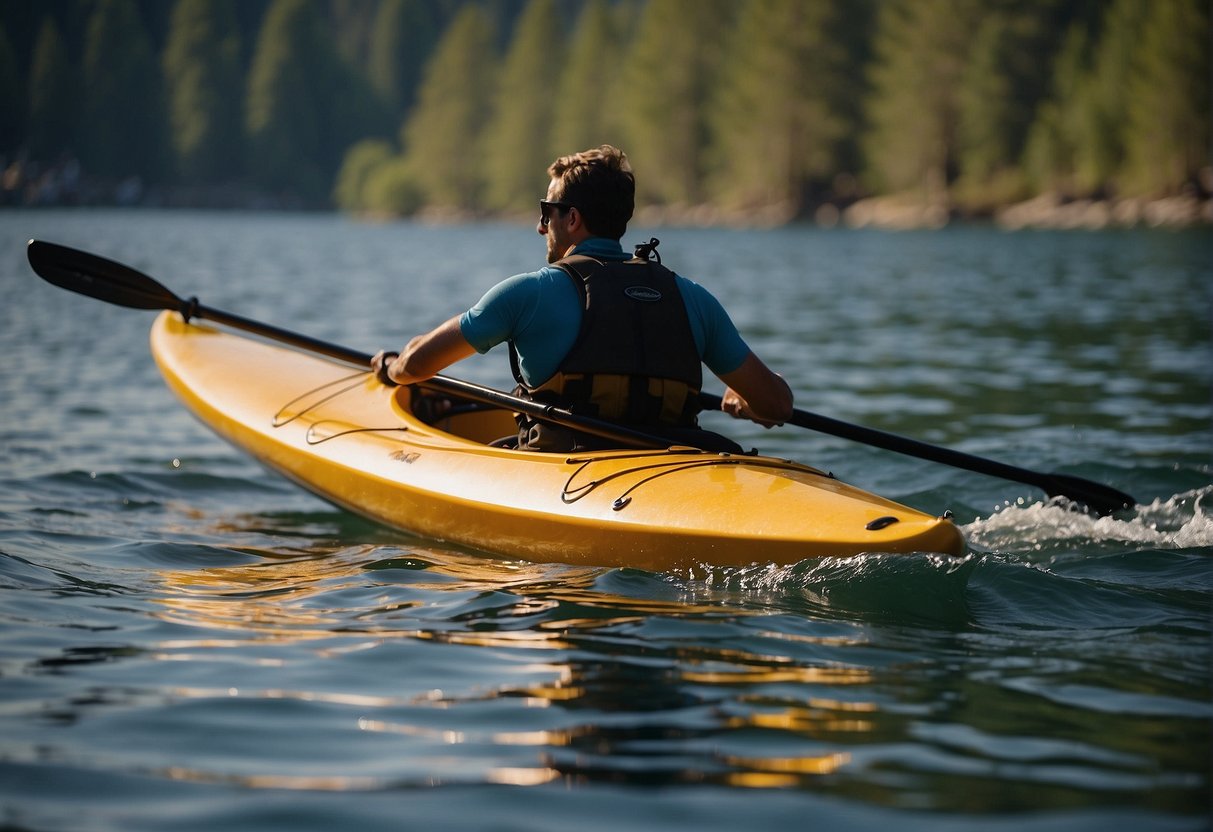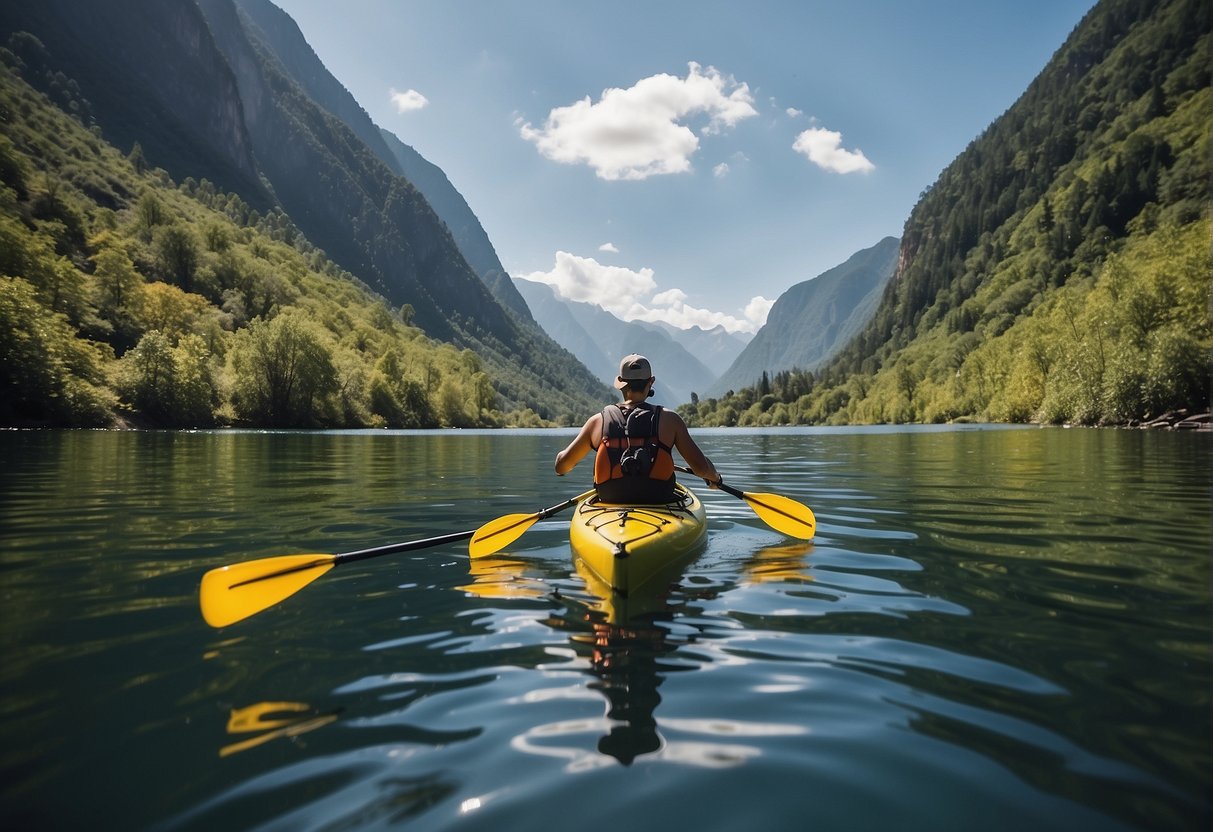Kayaking is a popular water sport that involves paddling a small boat, known as a kayak, through water using a double-bladed paddle. It is a low-impact activity that can be enjoyed by people of all ages and fitness levels. But is kayaking a good exercise? The answer is yes, kayaking is an excellent form of exercise that offers numerous health benefits.

One of the primary benefits of kayaking is that it provides a full-body workout. Paddling works the muscles in your arms, shoulders, back, and chest, while the twisting motion of your torso engages your core muscles. Additionally, kayaking is a great cardiovascular workout that can help improve your overall fitness level. According to Paddle Camp, paddling for just 30 minutes can burn up to 300 calories or more, depending on your intensity level.
Another benefit of kayaking is that it can be a stress-relieving activity. Being out on the water can have a calming effect on your mind, and the physical activity of paddling can help release endorphins, which are natural mood boosters. In fact, kayaking has been shown to have therapeutic benefits for people with anxiety and depression. Overall, kayaking is a great way to improve your physical health, mental well-being, and overall quality of life.
Physical Benefits of Kayaking
Kayaking is a great way to combine the benefits of a full-body workout with the enjoyment of being on the water. Here are some of the physical benefits of kayaking:
Full-Body Workout
Kayaking is an excellent full-body workout that engages multiple muscle groups. Paddling works your arm muscles, back muscles, and abdominal muscles. Your legs and core also get a workout as you use them to stabilize and maneuver the kayak. As a result, kayaking can help you build strength and endurance throughout your entire body.
Cardiovascular Health
Kayaking is a great cardio workout that can help improve your cardiovascular health. As you paddle, your heart rate increases, and you start to breathe faster. This increased oxygen intake helps to improve your lung capacity and overall cardiovascular health. Moreover, kayaking can help reduce the risk of heart disease, stroke, and other health conditions.
Strength and Toning
Kayaking can also help you tone and strengthen your muscles. Paddling requires a lot of upper body strength, which can help you build and tone your arm muscles. Additionally, the twisting motion of paddling engages your core muscles, which can help you build a stronger, more defined midsection.
Overall, kayaking offers a variety of physical benefits, including a full-body workout, cardiovascular health, and strength and toning. Additionally, kayaking is a low-impact exercise that is easy on your joints and can be done at your own pace. So, whether you are looking to get in shape, improve your cardiovascular health, or simply enjoy the great outdoors, kayaking is an excellent choice.
Mental Health Advantages
When it comes to mental health, kayaking has a lot to offer. Here are some of the ways in which kayaking can benefit your mental health.
Stress Reduction
Kayaking can be a great way to reduce stress. Being out on the water, surrounded by nature, can help you feel more relaxed and calm. In fact, studies have shown that spending time in nature can lower cortisol levels, which are a hormone associated with stress. Kayaking can also be a form of meditation, as you focus on your surroundings and the rhythm of your strokes.
Cognitive Benefits
Kayaking can also have cognitive benefits. Regular exercise has been shown to reduce the risk of cognitive decline, and kayaking is no exception. In addition, kayaking can help improve your focus and concentration. When you’re out on the water, you need to be aware of your surroundings and make quick decisions, which can help improve your cognitive abilities.
Kayaking can also help boost your confidence and self-esteem. Learning a new skill and mastering it can give you a sense of accomplishment and pride. Plus, kayaking can be a social activity, which can help improve your mood and reduce feelings of loneliness.
Overall, kayaking is a great activity for both physical and mental health. Whether you’re looking to reduce stress, improve your cognitive abilities, or just enjoy some time in nature, kayaking has a lot to offer.
Techniques and Skills

Paddling Technique
Paddling technique is a crucial aspect of kayaking that can make a huge difference in your experience and the effectiveness of your workout. Proper technique involves using your entire body to paddle efficiently and effectively. Here are some tips to help you improve your paddling technique:
- Use your core: Paddling requires torso rotation movement, which works your core muscles. Engage your core muscles by twisting your torso with each stroke.
- Use your upper body: The paddle stroke works your upper body muscles, including your arms, shoulders, and back. Make sure you’re using the proper grip and paddle angle to maximize the effectiveness of your stroke.
- Use your legs: Your legs play an important role in kayaking, providing stability and power. Keep your knees slightly bent and use your legs to help generate power with each stroke.
By mastering these techniques, you can paddle more efficiently and effectively, which can help you get a better workout and improve your overall kayaking experience.
Balance and Coordination
Kayaking requires a great deal of balance and coordination. As a paddler, you need to be able to maintain stability on the water while using your entire body to paddle. Here are some tips to help you improve your balance and coordination:
- Practice proper posture: Maintaining good posture is essential for balance and stability. Keep your back straight and your shoulders relaxed.
- Use your feet: Your feet play an important role in maintaining balance and stability. Keep your feet flat on the footrests and use them to help maintain balance.
- Master the backward stroke: The backward stroke is a great way to improve your balance and coordination. By paddling backward, you can practice using your entire body to paddle while maintaining stability on the water.
By focusing on these techniques and skills, you can improve your paddling, balance, and coordination, which can help you get a better workout and enjoy your kayaking experience to the fullest.
Kayaking vs Other Exercises

Kayaking is a great exercise that offers a unique combination of physical and mental benefits. It is a low-impact workout that can help you lose weight, improve cardiovascular health, and build strength. In this section, we will compare kayaking with other popular exercises and highlight the benefits of kayaking.
Comparison with Gym Workouts
Going to the gym is a popular way to stay fit and healthy. However, kayaking offers several advantages over traditional gym workouts. Unlike gym workouts, kayaking allows you to enjoy the great outdoors and explore new places while getting a full-body workout. Kayaking engages multiple muscle groups, including your arms, shoulders, back, core, and legs. It also improves your balance, coordination, and flexibility.
Benefits Over Running and Cycling
Running and cycling are two of the most popular forms of cardiovascular exercise. However, kayaking offers several benefits over running and cycling. Kayaking is a low-impact workout that puts less stress on your joints than running and cycling. It also provides a full-body workout that engages multiple muscle groups. Kayaking can burn up to 500 calories per hour, making it an effective way to lose weight and improve cardiovascular health.
In conclusion, kayaking is a great exercise that offers several unique benefits. It is a low-impact workout that can help you lose weight, improve cardiovascular health, and build strength. Kayaking engages multiple muscle groups and improves your balance, coordination, and flexibility. Compared to gym workouts, kayaking allows you to enjoy the great outdoors and explore new places while getting a full-body workout. Compared to running and cycling, kayaking is a low-impact workout that puts less stress on your joints and provides a full-body workout.
Safety and Preparation

Kayaking can be a fun and rewarding exercise, but it’s important to take proper safety precautions before hitting the water. Here are some essential safety tips to keep in mind before embarking on your kayaking journey.
Essential Equipment
Before you start kayaking, make sure you have all the necessary equipment. This includes a kayak, paddle, life jacket, whistle, and sunscreen. It’s important to wear a life jacket at all times while kayaking, as it can save your life in case of an emergency. The whistle is also an important piece of equipment, as it can be used to signal for help if you get into trouble.
When choosing a kayak, make sure it’s the right size for you and your body type. A kayak that’s too small or too large can be difficult to maneuver, which can be dangerous in rough waters. It’s also important to choose a paddle that’s the right size for you, as this can affect your performance on the water.
Health and Safety Tips
In addition to having the right equipment, there are some important health and safety tips to keep in mind while kayaking. First and foremost, it’s important to know how to swim. While a life jacket can keep you afloat, knowing how to swim can help you get to safety more quickly in case of an emergency.
It’s also important to stay hydrated while kayaking, especially on hot days. Bring plenty of water with you and take breaks as needed to stay hydrated. Additionally, make sure to wear sunscreen to protect your skin from the sun’s harmful rays.
Finally, it’s important to be aware of your surroundings at all times while kayaking. Pay attention to the weather and water conditions, and be prepared to adjust your plans if conditions become dangerous. By taking these safety precautions, you can enjoy the benefits of kayaking while staying safe on the water.